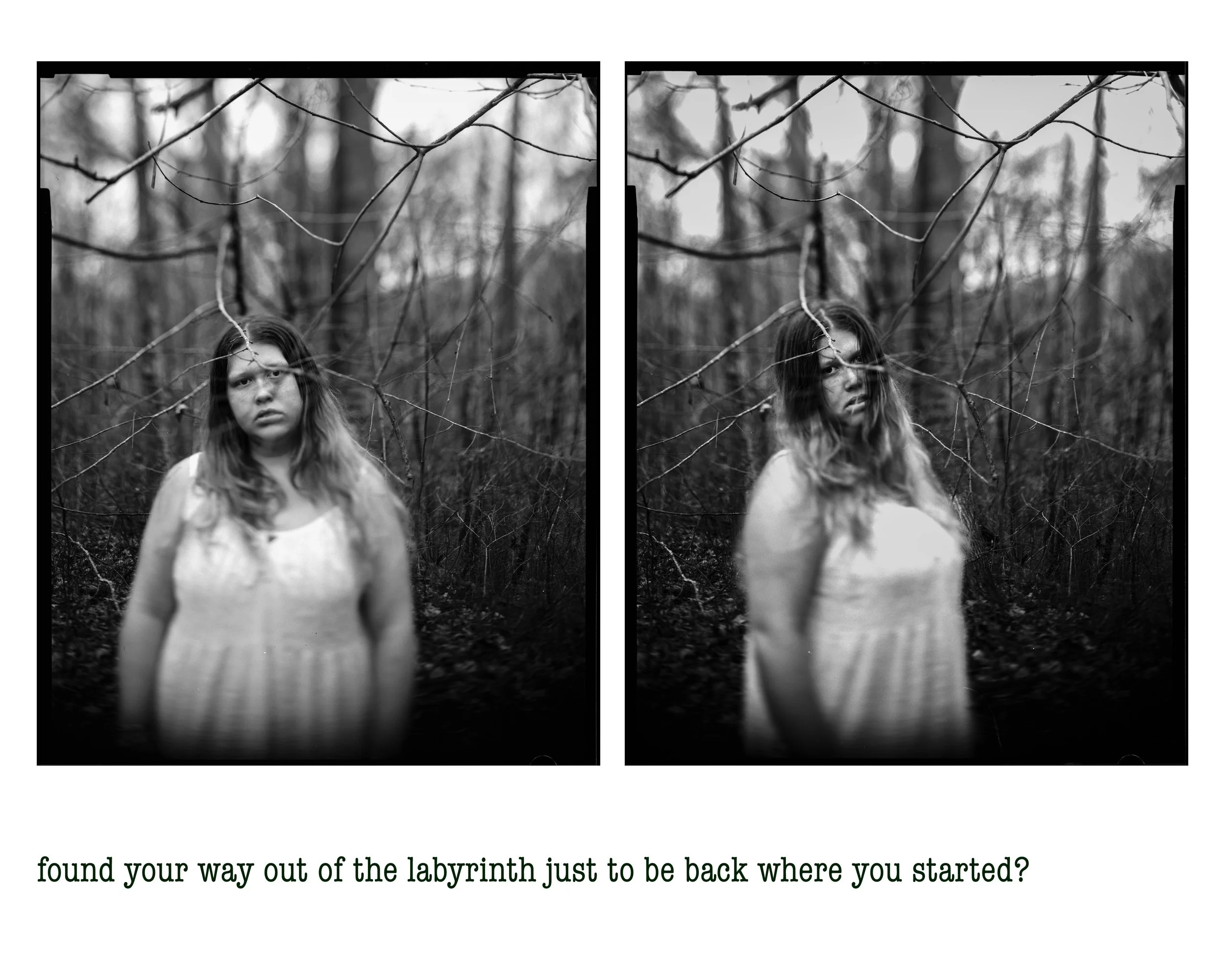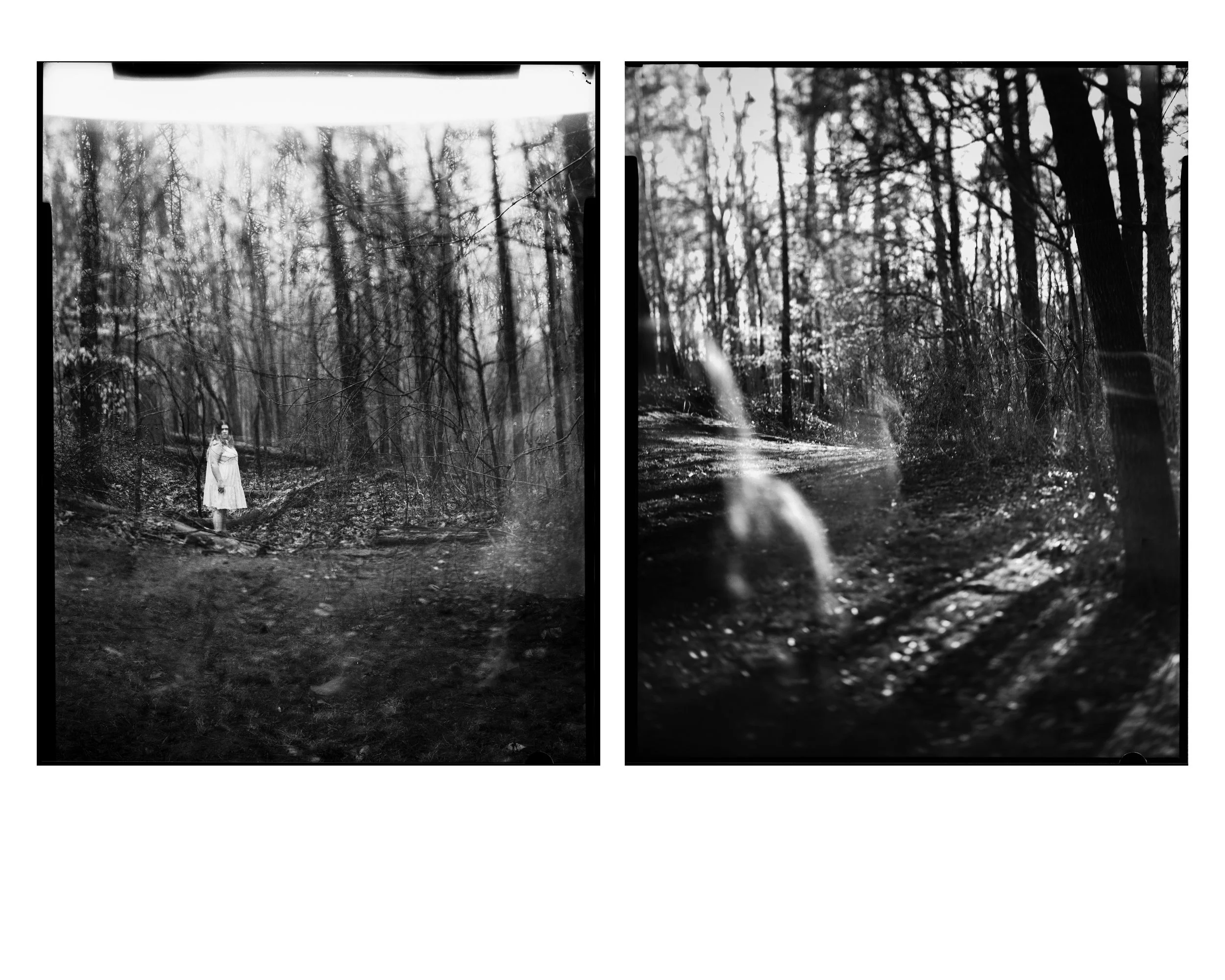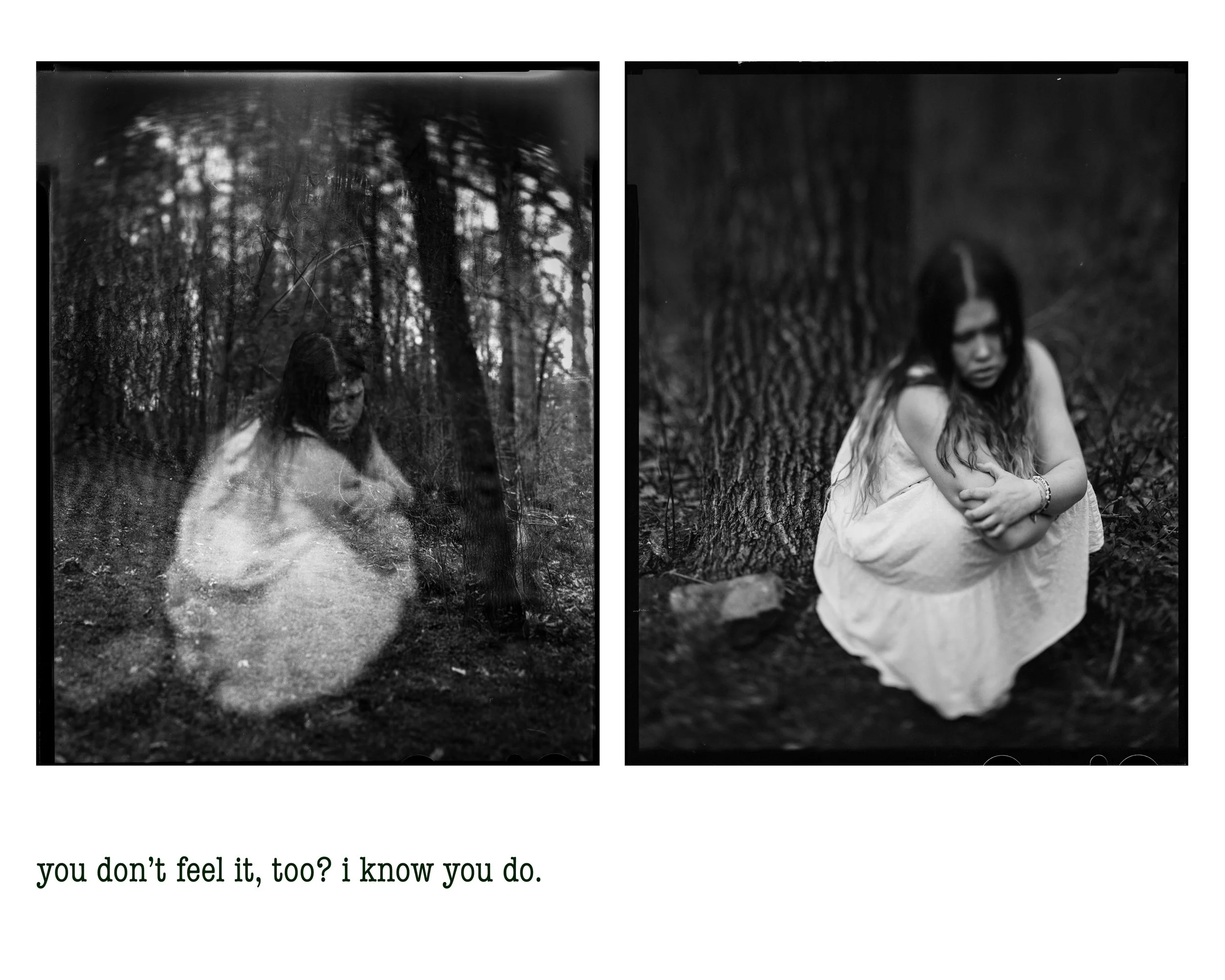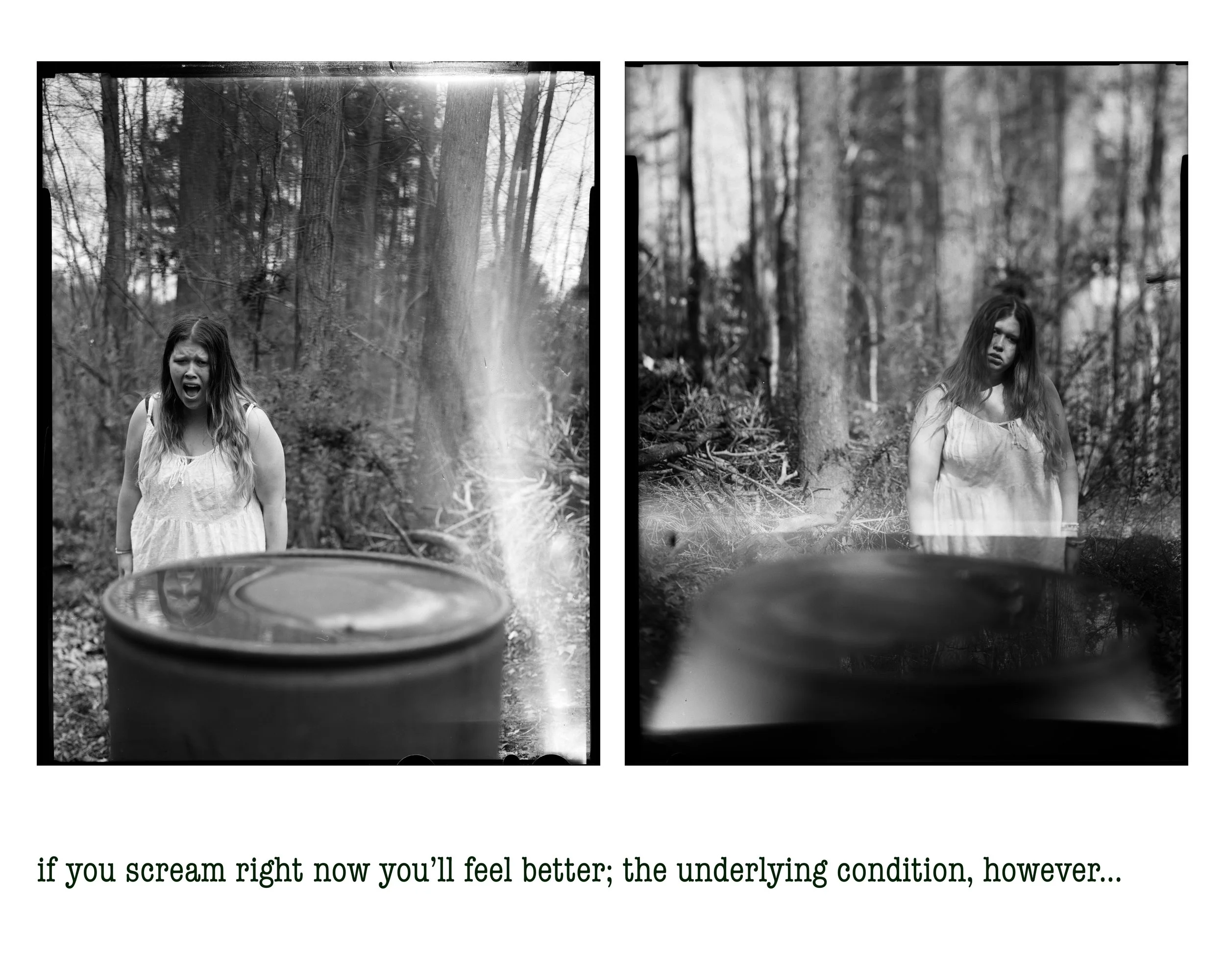(in)Visible
Mental health can be a difficult subject to approach, especially in visual media where it is easy to further harmful stereotypes and to do nothing productive. However, I believe that utilizing the gothic with its rich literary and visual history allows for a different perspective on how we can explore a person’s mental health. Specifically, looking at gothic horror in its written and visual entertainment formats provides us with a means of exploring the internal and external factors of a person’s mental wellbeing. The demonstration of both mental and physical manifestations of normal and paranormal episodes suggests that the presence of one does not negate the existence of the other. It offers a window into the supposed dichotomy between literal and metaphorical, real and made up, and instead connects the internal and external, represented by the supernatural of gothic horror.
To explore this concept, I used a mixture of analog and digital photographic processes, as well as an array of technical skills including motion blur, view camera movements, and a variety of facial and body work. My research included ghost stories and folktales, mental health advocacy, and literary/visual media forms of the gothic.








